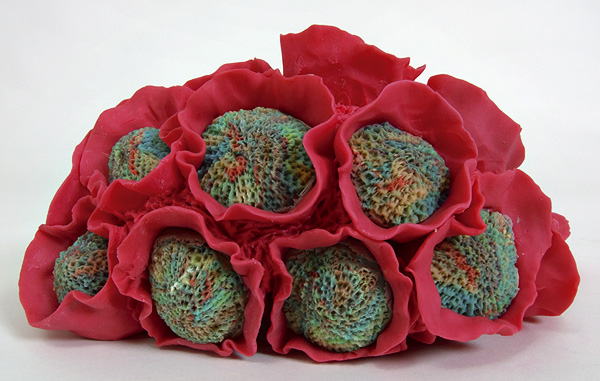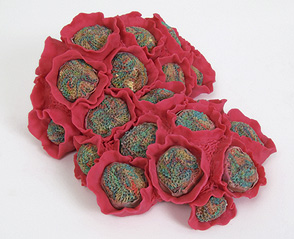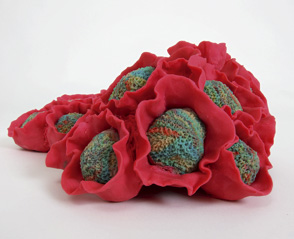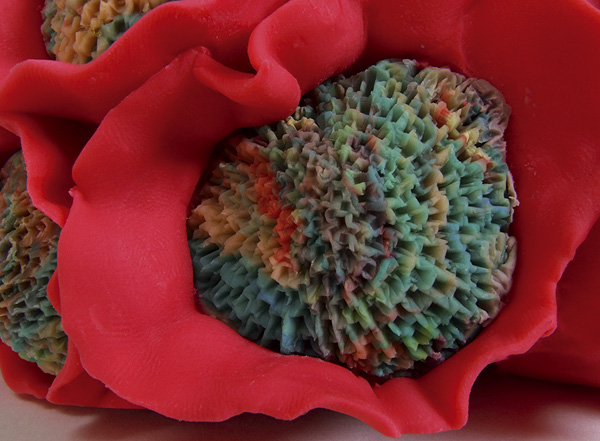gewöhnlicher unheilvoller
common calamitous one




maestus vulgaris ist ein zellkonstanter organismus mit lichtsinn (dermatooptisch). sinneszellen sind über den ganzen körper verteilt. im zusammenwirken vieler lichtsinneszentren wird eine komplexe dezentrale sehleistung vollbracht. eigentlich ist dieses wesen nur ein autonomes organ, das sich durch knospung und teilung vegetativ vermehrt (agamogonie). bei der hier vorliegenden monocytogenen oder ungeschlechtlichen fortpflanzung gibt es keine leichenbildung, da das elternindividuum völlig in tochterindividuen aufgeht (architomie). der organismus ist an der basis rosa gebändert. der kleinwuchs von maestus vulgaris ist eine voraussetzung für die hohe geschwindigkeit der generativen reproduktion.
maestus vulgaris is a constant-celled organism with a dermatopic sense of light. sensory cells are spread across the entire body and through the interaction of many, a complex, decentralized visual acuity is achieved. actually this creature is an autonomous organ, which multiplies vegetatively through budding and division (agamogony). the monocytogenic or asexual reproduction at hand produces no corpses, since the parent individual transforms into daughter individuals (architomy). the organism is ribboned in pink at its base. microsomia is a prerequesite for the high rate of generative reproduction.

